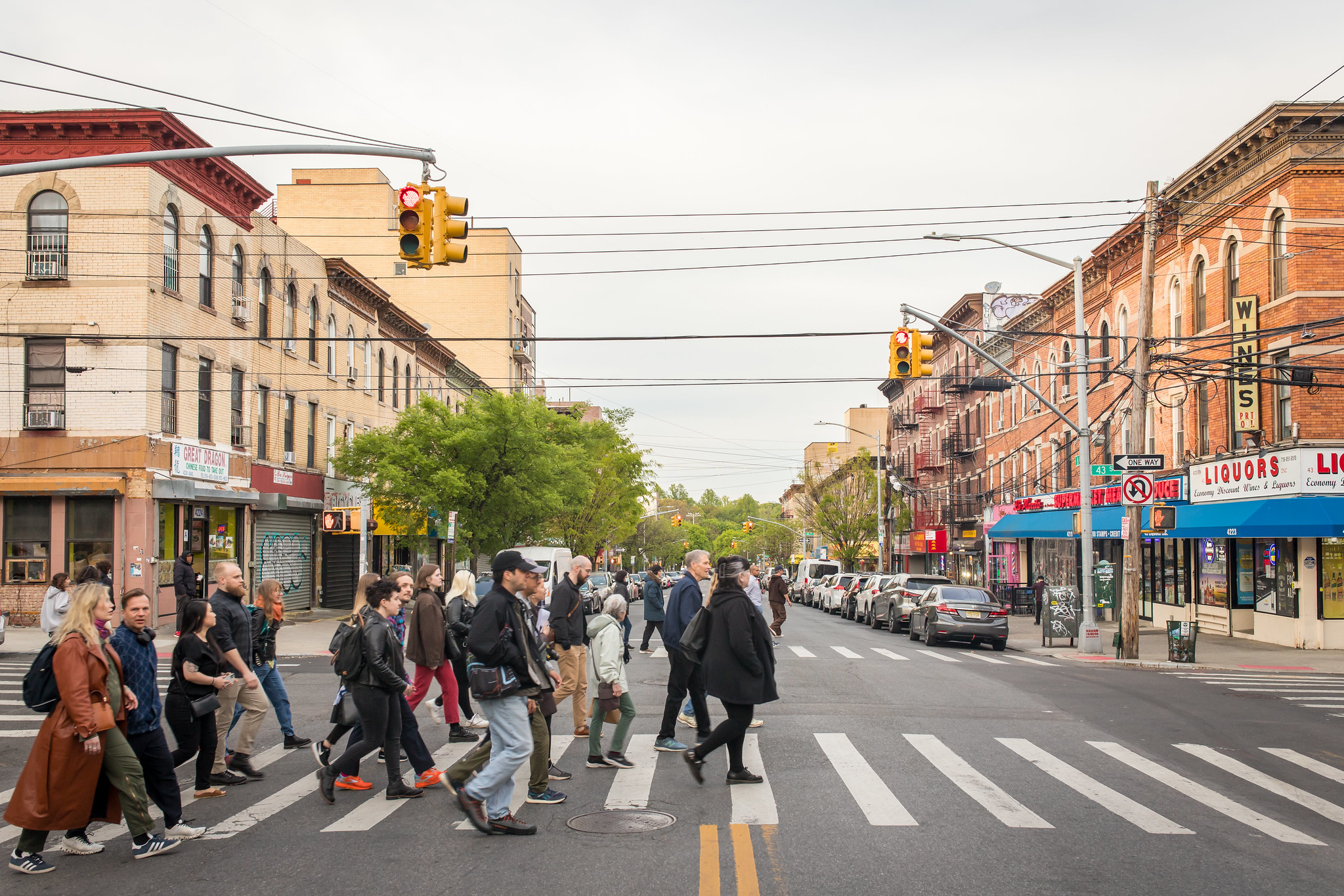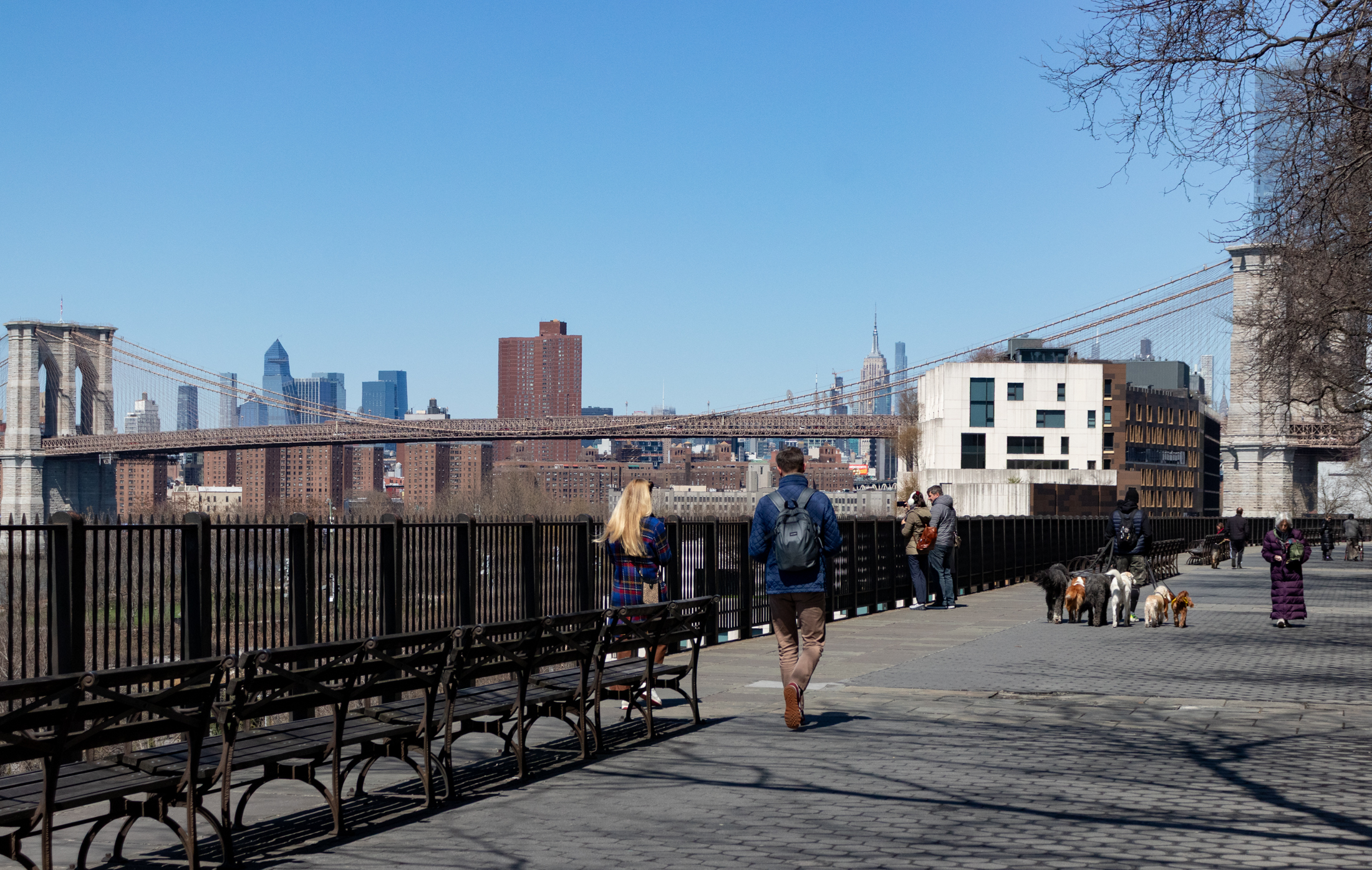Queenswalk: Juniper Valley Park
It’s officially summer now, a time when an afternoon in the park is just the thing to cool off body and soul. Because of history and geography, Queens can rightly boast of having some of the most unique parkland in the city, with parks ranging from the concrete and steel of Gantry Plaza State Park…


It’s officially summer now, a time when an afternoon in the park is just the thing to cool off body and soul. Because of history and geography, Queens can rightly boast of having some of the most unique parkland in the city, with parks ranging from the concrete and steel of Gantry Plaza State Park to the wide open sand dunes of Fort Tilden. While most of our city’s parks can boast of meadows and trees, Queen’s Juniper Valley Park, in Middle Village, is probably the only one that can boast of having a peat bog.
The park started out as a swamp. Tens of thousands of years ago, the glacier that created Long Island left behind a lot of water that collected in a swamp here. Much of that swamp eventually became a peat bog, as tons of vegetable material rotted and decomposed in the water and was turned into peat. Scientists in 1934 figured that the peat bog measured 10 acres in area, 16 feet in depth, and 390,000 cubic yards in volume.
The bog was called Juniper Swamp, due to the thick forest in and around the swamp filled with juniper and white cedar trees. During the Revolutionary War, the British occupying army camped out in the Middle Village area. Over the course of the war they decimated the forests in the area, cutting down trees for shelters, firewood and shipbuilding. They discovered the peat bog, and began cutting peat for fuel as well, a task also taken up by local residents, as the British had left little wood for anyone else.
In 1822, Thomas Pullis bought a 32 acre farm in Middle Village, on the eastern edge of the swamp. The family farmed the land for several decades afterward. The Pullis Farm Cemetery is located in today’s park, on North 63rd Avenue near 81st Street. It’s one of the very few surviving farm burial grounds still existing in all of New York City. The small grave yard contains three marble grave markers. There is one for a child, another for “J.H. G.” and a third for Thomas Pullis, Senior, and possibly his wife Elizabeth, on the same stone. The stones date from at least 1846.
In his will, Thomas Pullis prohibited the sale of the cemetery, and left instructions to build a brick wall around it for protection. He also allowed another portion of his property to be sold to the parish of St. Margaret’s for the site of their first church, which was built in 1880. Off site of the Pullis farm, the winter cold froze the swamp lake into a large skating rink, which was enjoyed by Middle Villagers of all ages.
In 1916, the Long Island Railroad began cutting a path for track across the swamp. This construction drained the water, and the long forgotten peak bog was rediscovered. Today, the railroad tracks constitute the western edge of the park. During the 1920s, the area of Juniper Swamp east of the railroad and west of where today’s tennis courts stand was called the Metropolitan Heights Fairground. It was a racetrack used for horse, dog, automobile and motorcycle races. The track was just shy of a mile in length.
Also in the 1920s, the swamp and surrounding land became the property of one of Queens’ most notorious Jazz Age gangsters. His name was Arnold Rothstein. He’s best known for having been behind the infamous throwing of the 1919 World Series, also known as the Black Sox Scandal. Rothstein also is credited for being the first to realize that Prohibition was a gold mine for organized crime, a business opportunity beyond compare. He was one of the kingpins of what became known as the “Jewish Mob in New York”, a collection of dangerous rogues that included Meyer Lansky and “Dutch” Shultz. Rothstein was known in the Mob underworld as “the Brain,” “Mr. Big” and “the Man Uptown.”
Rothstein is said to have bought his 88 acres of swampland with the money he made from the Black Sox Scandal. He also saw his Middle Village purchase as a way to make more money. He planned to flip the property to the government, pitching it to New York City as the perfect place for an airport. Rothstein knew that developed property sold for more money than undeveloped empty land, so he had a village of 143 homes thrown up on site, so that he could sell it for more money.
The houses were called the “Phantom Village.” They were literally facades; more like theater sets than real homes. Rothstein hoped the city wouldn’t look at them closely, in fact, they were better seen in a fly-by high above the houses. The city may sometimes act as if it was born at night, but it wasn’t last night. They quickly recognized the Phantom Village for what it was and rejected Rothstein’s selling price.
It turned out it didn’t matter, anyway. Arnold Rothstein was murdered in 1928. He was taken out for some overdue and unpaid gambling debts. He had been an addicted compulsive gambler most of his life, and had lost heavily in what turned out to be a fixed high stakes poker game. Many said that his enemies had arranged the whole thing. Rothstein’s brother got the estate, and sold the 88 acres to the City in exchange for a forgiveness of Rothstein’s back taxes. The City paid $5,700 per acre for the land.
Instead of an airport, the city immediately announced that the land would become a park. This was a welcome announcement to Middle Villagers and developers alike, and more homes were built in the neighborhood. As the Great Depression settled in during the 1930s, the opportunity for Parks Commissioner Robert Moses to use WPA funds for the park also sparked interest in the area. Moses took advantage of the peat bog at the site, digging it up to use as landscaping material for other parks and parkways.
Between 1937 and 1949, the city added adjacent parcels of land to the park, bringing it to its current size of 55.2 acres. By 1942, workers, funded by the WPA, transformed the part of the park east of 76th Street. They laid out paths, and built playgrounds, fences, benches, eight tennis courts, four baseball fields, handball courts, and a sprinkler/wading pool. The original plans also called for paddle tennis, badminton, and shuffleboard facilities.
Landscaping in the park included the planting of 168 new shade trees, 2000 rose bushes, thousands of shrubs and acres of lawn. The western third of the park stayed swampland, with only pathways and lighting installed on it, until 1967. At that time, the swamp was drained for parking lots, more baseball diamonds, a running track and a soccer field. The parking lots were removed in the 1990s, when they became too noisy at night.
Juniper Valley Park is one of Queens’ most popular and beloved parks today, due in no small way to the way neighbors have come out to volunteer their services to help the park and preserve and maintain its special and unique features. They plant flowers, clean up and have donated trees and plants to the park. The Pullis Farm Cemetery is a special project for volunteers. They’ve planted trees and flowers, weeded and seeded, and maintained the stones and graves.
In 1997, the Lutheran All Faiths Cemetery donated a new gravestone in memory of the Pullis family. The volunteers also installed flagpoles on the site. New evergreens, oaks, Flowering Apple, Flowering Cherry and White Birch trees were planted around the cemetery. Other volunteers help maintain the tennis and bocce courts, and help organize events at the park.
The park is in Middle Village, bordered by Juniper Boulevard North on the north, Juniper Boulevard South on the south, Lutheran Avenue on the west, and Dry Harbor Road on the east. The closest buses are the Q29 and Q47, and the nearest train is the M train to 80th Street/Penelope Avenue.
Through the efforts of the Parks Department and the many busy volunteers, thousands of people come to enjoy the beauty of Juniper Valley Park. If you’ve never been there, perhaps this summer you will be one of them. GMAP
(Photograph:New York City Parks Dept.)











What's Your Take? Leave a Comment